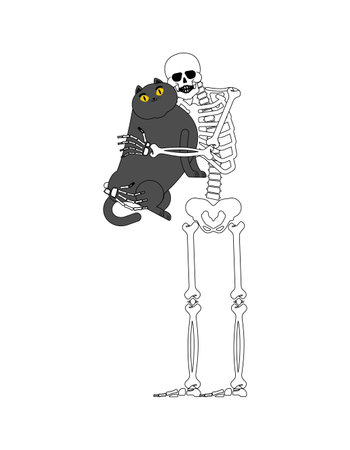Understanding Childrens Grief
When a beloved family pet passes away, children’s reactions can vary widely depending on their age and emotional maturity. In many British households, pets are considered part of the family, and their loss can deeply affect children, often marking their first experience with grief. Understanding how children at different developmental stages perceive and process the death of a pet is crucial for providing age-appropriate support. Younger children may not fully grasp the concept of death as permanent, sometimes expecting their furry friend to return or asking repeated questions about where the pet has gone. Older children and teenagers, meanwhile, may understand the finality but struggle with more complex emotions such as guilt, anger, or sadness. Below is a table summarising typical responses by age group, offering insight into how British families might notice and respond to these emotions at home:
| Age Group | Common Emotional Responses | How They May Express Grief |
|---|---|---|
| Under 5 years | Confusion, denial, separation anxiety | Repeated questions, searching for the pet, clinginess |
| 6–9 years | Sadness, guilt (believing they caused it), worry about others dying | Crying, changes in behaviour, drawing or talking about the pet |
| 10–12 years | Deeper sadness, anger, concern about fairness of life/death | Withdrawal, acting out at home or school, talking with friends |
| Teenagers | Sorrow, existential questions, embarrassment about grieving | Seeking solitude, expressing feelings through creative outlets or online communities |
Recognising these different reactions helps British parents and carers provide sensitive guidance tailored to each child’s understanding and needs during such an emotional time.
2. Choosing the Right Words
When explaining the death of a beloved pet to children, it is essential to use language that is both honest and gentle, especially within British cultural norms where understatement and sensitivity are often valued. Children benefit from clear explanations, yet overly harsh or graphic details can be distressing. Instead, choose words that acknowledge the loss while offering comfort.
Key Tips for Gentle, British-Sensitive Communication
| What To Say | What To Avoid |
|---|---|
| “Our pet has died. This means they won’t be coming back, but we can remember the happy times.” | Avoid euphemisms like “gone to sleep” or “run away”, as these can confuse younger children. |
| “It’s very sad when someone we love dies. It’s okay to feel upset or miss them.” | Avoid minimising feelings with phrases like “Don’t be silly” or “You’ll get over it soon.” |
| “We gave our pet lots of love and care, and now we can talk about our favourite memories together.” | Avoid blaming yourself, your child, or suggesting the pet left because of something anyone did. |
Age-Appropriate Phrasing
- For younger children (under 7): Use simple, concrete terms—“died” rather than “lost”—and repeat gently if needed.
- For older children: Allow for more detailed questions and offer honest answers while maintaining a reassuring tone.
The Importance of Reassurance
British families often find comfort in routines and quiet support. Let your child know that it’s normal to feel a mix of emotions and that the family will support each other through this time. Avoid rushing them through their grief; instead, offer a comforting presence and encourage sharing fond memories as a way to honour your pet’s place in your home life.

3. Cultural and Religious Considerations
In the UK, how families approach the loss of a pet is often shaped by a blend of cultural traditions, religious beliefs, and even local school practices. Understanding these influences can help parents guide children through grief with sensitivity and support that feels familiar and comforting.
British Traditions Around Pet Loss
Pet ownership is common in British households, and there are gentle customs that many follow when a beloved animal passes away. For example, it’s not unusual for families to hold a small ceremony in the garden or at a favourite park spot. Some choose to plant a tree or flowers as a living memorial, creating a space where children can remember their pet fondly. These acts offer children a tangible way to say goodbye and cherish memories.
Religious Beliefs and Their Influence
Religion plays a subtle but important role in how some British families explain death to children. Christian families might talk about pets going to heaven, while others may focus on the idea of nature’s cycle or reincarnation, drawing from diverse backgrounds present in modern Britain. It’s helpful for parents to consider their own beliefs and discuss them openly with children, allowing space for questions and emotions.
School Support and Local Customs
Schools in the UK are often aware of the emotional impact of pet loss on children. Many teachers will quietly check in on pupils who have experienced this loss, offering extra kindness or time out if needed. Some schools may incorporate discussions about loss into Personal, Social, Health and Economic (PSHE) education, helping all pupils understand grief in an age-appropriate way.
Common British Practices When a Pet Dies
| Practice | Description |
|---|---|
| Garden Burial | A small family gathering to bury the pet in the garden or allotment, often accompanied by sharing stories or drawings. |
| Cremation & Keepsakes | Using local pet crematoriums and keeping ashes or paw print mementos at home. |
| Memorial Planting | Planting flowers or trees in memory of the pet, providing an ongoing place for remembrance. |
| School Acknowledgement | Teachers offering support, sometimes sending sympathy cards from classmates. |
| Storytelling & Art | Encouraging children to express feelings through drawing, writing stories, or making photo collages. |
The unique blend of British customs ensures that every family can find an approach that honours their values while giving children space to process their feelings gently and meaningfully.
4. Supporting Children Through Grief
Losing a beloved pet can be a deeply emotional time for children, and it’s important for British families to offer support in ways that feel both comforting and familiar. Here are some practical suggestions, inspired by everyday life across the UK, to help children express their feelings, cherish memories, and find solace within the warmth of home and community.
Encouraging Emotional Expression
Create a safe space for your child to talk about their feelings. Encourage open conversations around the kitchen table or during a gentle walk in the park. Sometimes British children may feel reserved; using creative outlets like drawing, writing letters to their pet, or keeping a “memory diary” can help them articulate their emotions without pressure.
Keeping Memories Alive
Honouring a pet’s memory is an essential part of the healing process. Simple rituals rooted in daily British life can make this meaningful:
| Memory Activity | Description | Example in UK Homes/Communities |
|---|---|---|
| Memory Box | Gather favourite photos, collars, or toys in a special box. | A decorative tin from Marks & Spencer filled with mementos on the mantelpiece. |
| Planting a Flower | Plant flowers or a small tree in remembrance. | Planting daffodils in the garden—symbolic of new beginnings each spring. |
| Family Story Time | Share stories about the pet during Sunday roast or tea time. | Telling fond tales over biscuits and tea as a family tradition. |
| Cherished Artwork | Create drawings or paintings of the pet together. | Displaying children’s artwork on the fridge or hallway wall. |
Finding Comfort Within Community
The sense of community found in many British neighbourhoods can provide additional comfort. You might:
- Reach out to local friends who also knew the pet—perhaps inviting them for a cup of tea and shared reminiscence.
- If your child attends school or nursery, inform teachers so they can offer extra support or understanding during the school day.
- Consider participating in or creating a small memorial event, such as lighting a candle at home, attending an informal gathering at the local park, or making use of community noticeboards to share a tribute.
When Additional Support Is Needed
If you notice your child is struggling significantly—becoming withdrawn, having trouble sleeping, or expressing ongoing sadness—it may be helpful to seek guidance from professionals. Many UK schools have pastoral care teams, and organisations such as Child Bereavement UK offer tailored advice and resources for families coping with loss.
5. When to Seek Further Help
Losing a beloved pet can have a profound effect on children, and while many will adjust over time with the support of their family, some may need extra help to process their grief. Recognising when your child might benefit from additional support is crucial in helping them cope healthily.
Signs Your Child May Need Extra Support
Behaviour |
What to Look Out For |
|---|---|
Prolonged Sadness |
If your child remains deeply sad or withdrawn for several weeks, beyond what seems typical for their age. |
Changes in Daily Routine |
Noticeable changes in eating, sleeping, or school performance that persist. |
Social Withdrawal |
Your child avoids friends, activities, or family interactions they previously enjoyed. |
Anxiety or Fearfulness |
New fears about loss or safety, nightmares, or excessive worry about other loved ones dying. |
Physical Complaints |
Frequent headaches, stomach aches, or general complaints without a clear medical reason. |
Accessing Bereavement Support in the UK
If you notice these signs or are concerned about your child’s wellbeing, consider reaching out for professional support. The UK offers a range of bereavement services tailored for children and families:
- Child Bereavement UK: Offers guidance and counselling for children who have lost a pet (or any loved one). Visit their website or call their national helpline.
- Winston’s Wish: Provides practical support for grieving children and their families across Britain.
- Samaritans: Available 24/7 to offer emotional support to anyone in distress—including young people struggling with loss.
- Your GP: Can refer you to local counselling services or mental health professionals specialising in childhood bereavement.
Cultural Sensitivity & Community Resources
British communities often have local groups or church-based support circles where families can share experiences and find comfort together. Schools also frequently offer pastoral care or access to trained counsellors who understand the unique needs of British children coping with bereavement.
6. Honouring Your Pet Together
Losing a cherished pet is a deeply emotional experience for families, especially for children. Creating meaningful ways to honour your pet’s memory can help everyone process their feelings and celebrate the special bond you shared. Here are some creative yet sensitive ideas tailored for British families:
Creative Ways to Remember Your Pet
| Activity | Description | How It Helps Children |
|---|---|---|
| Crafting Memory Boxes | Gather photos, collars, favourite toys, or drawings and place them in a decorated box. | Offers a tactile way to reminisce and keep memories close by. |
| Planting a Garden Tribute | Choose your pet’s favourite spot in the garden and plant flowers, bulbs, or even a small tree. | Provides a living memorial children can visit, water, and watch grow over time. |
| Community Remembrance Events | Many local communities across the UK hold annual pet remembrance days or walks. | Encourages sharing stories with others who have experienced similar loss, fostering connection. |
| Baking Treats in Their Honour | Bake homemade treats inspired by your pet’s favourites and share them with friends or neighbours who have pets. | Nurtures positive action and allows children to express love through giving. |
| Cherishing Story Time | Create a bedtime ritual where you read stories about pets or share your own happy memories together. | Promotes open conversations about grief in a gentle, comforting environment. |
Making Memories Last as a Family
It can be helpful to choose an activity that feels right for your family. Some may find comfort in quiet reflection—perhaps lighting a candle on special days—while others might prefer engaging in community events or crafting together. Allowing your child to contribute ideas empowers them to feel part of the healing process and honours their unique relationship with your pet.
Useful Tips for British Families:
- Personalise Your Tribute: Use local flora or British wildflowers when planting memorial gardens for an extra special touch.
- Connect Locally: Check with your local council or vet surgery for upcoming remembrance events in your area.
- Create Keepsakes: Consider commissioning a portrait from a local artist or framing your child’s drawing of your pet as part of your home décor.
A Gentle Path Forward
Honouring your pet together not only preserves precious memories but also helps children understand that it’s natural to grieve while still cherishing the joy pets bring to our homes. Through these acts of remembrance, British families can weave love and gratitude into everyday life—even after saying goodbye.


